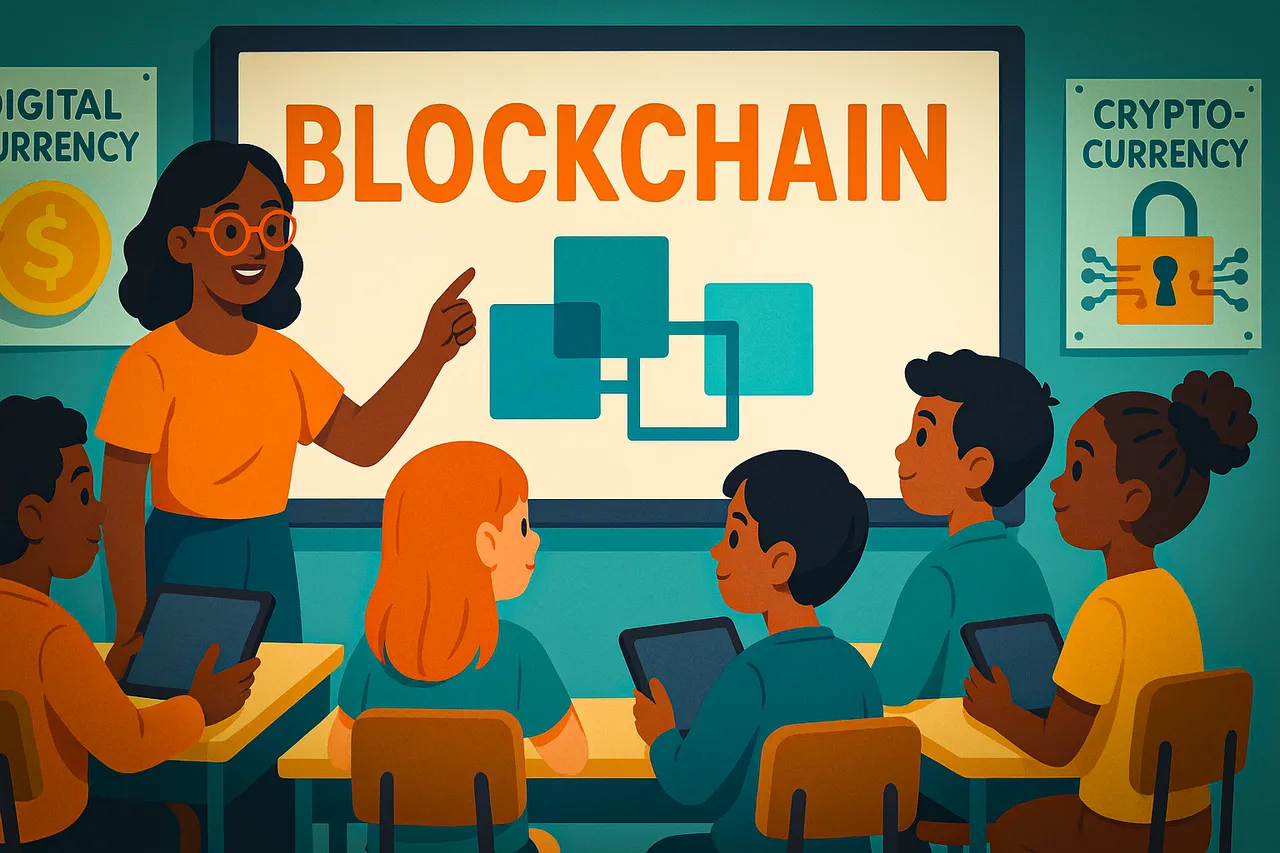
Image created with Leonardo AI and edited in Photoshop
When we hear the words "blockchain" or "cryptocurrencies," the last thing we think of is an elementary school class with a group of children learning about wallets or Web3. But isn't it even more absurd that in the 21st century, future adults leave school without knowing anything about how one of the most relevant emerging economic systems of our time works?
Yes, maybe it sounds a little radical. Like giving an eight-year-old a quantum physics textbook. But we're not talking about children becoming traders or speculators. We're talking about real digital and financial literacy. About preparing the youngest generations for a world where banks won't always be traditional ones, and where money can be protected by math instead of a safe.
Financial education is broken (and blockchain may be the remedy)
In most school systems around the world, talking about money is practically forbidden. They teach us how to memorize formulas, but not how to manage our money. People talk about the American Revolution, but not what compound interest is. And when the economy is touched upon, it's done so in such a distant way that it seems it's only for those who will work in the sector.
Blockchain, that digital chain that guarantees trust without the need for intermediaries, is not just a technology. It's a completely different way of understanding how we relate to value, property, power, and information.
Teaching blockchain in schools isn't about teaching them how to mine Bitcoin, but something much more fundamental: how to trust a system that doesn't depend on a single center of power. And that, in a world full of fake news, failing banks, and centralized platforms that do whatever they want with our data, is an urgent lesson.
Ideas for introducing blockchain into the classroom
We don't need blackboards full of code or teachers with PhDs in cryptography. What we need is creativity and a little willpower.
Simulation games: Imagine a game where children exchange tokens instead of money, and where the rules of the game are written on a blockchain. Through games, you can teach what a smart contract is, how a transaction is verified, and why no one can cheat without everyone noticing.
Animated stories and tales: Create audiovisuals or tales where the protagonists use blockchain to solve problems in their community: prevent someone from hoarding something, or ensure that all votes for class president are counted without errors.
Classroom projects with NFTs: Students can create digital art and then understand how that art can be registered on the blockchain, fostering creativity and thinking about digital rights from a young age.
Comparison with traditional systems: Show how a blockchain differs from the "teacher's notebook," where only the teacher can write and erase. Whereas on a blockchain, all students can see and verify what is written, but no one can modify it without consensus.
Benefits of Early Education
Critical Thinking: Understanding blockchain means understanding how trust is built. This leads to questioning institutions, systems, and discourses. And that is, ultimately, pure freedom.
Preparing for the Future of Work: There are already companies that pay salaries in cryptocurrency. There are already decentralized communities that don't answer to bosses, but to algorithms and voting. The future won't wait for educational systems to catch up.
Financial Inclusion: Many people around the world, even children, don't have access to a bank. But they do have access to a cell phone. Teaching blockchain can be the gateway for them to understand and access new forms of economic participation (always supervised by an adult, of course).
And the obstacles?
Of course, there are some. And they are not few.
Governments and Elites: It's not advisable to teach their future "subjects" about freedom and economics from a young age; they would lose a lot of control over them.
Misinformation and fear: Many people still believe that cryptocurrencies are only for criminals and scammers or that it's a financial bubble that will burst tomorrow. Imagine what they think about teaching it to children.
Lack of teacher training: Teachers can't teach what they don't understand. Therefore, any serious attempt to introduce blockchain into schools must begin by teaching educators with simple, accessible examples free of cryptic jargon.
Institutional resistance: Like any structural change, this requires time, resources, and political determination. And education is not usually the first to receive budgets or technological updates.
So why do it?
Because education isn't just about preparing for the present. It's about anticipating the future. If we don't teach children how the money of the future works now, someone else will later. And it probably won't be with the best of intentions.
Blockchain isn't just a technical tool: it's an exercise in trust, community, and freedom. If that doesn't deserve a place in school, what does?
Original text created in Spanish and translated into English with Google Translate.